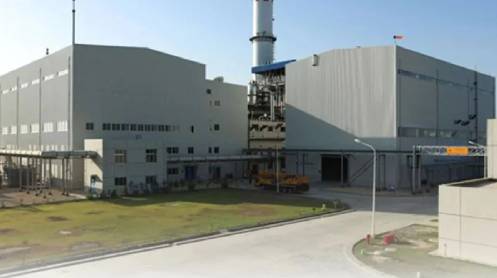Crude prices rose more than 1% to over $120 a barrel on Friday, as traders reconciled the impact of a missile attack on an oil distribution facility in Saudi Arabia with a possible release of oil reserves by the United States.
Brent crude settled up $1.62, or 1.4%, to $120.65 a barrel and US West Texas Intermediate (WTI) crude ended at $1.56, or 1.4% higher, at $113.90. Both had dropped $3 earlier.
Both benchmarks notched their first weekly gains in three weeks – Brent rose more than 11.5% and WTI gained 8.8%
Yemen’s Houthis said they launched attacks on Saudi energy facilities on Friday and the Saudi-led coalition said Aramco’s fuel distribution station in Jeddah had been targeted by an attack, but that fire in two tanks at the facility had been brought under control.
Read more: Yemen rebel attack on Saudi oil plant sets off huge fire by F1 track
Saudi Arabia said it will not hold responsibility for any shortage of oil supplies in global markets caused by Houthi attacks on its oil facilities.
The Houthi movement that has been battling a coalition led by Saudi Arabia for seven years launched missiles on Aramco’s facilities in Jeddah and drones at Ras Tanura and Rabigh refineries, the group’s military spokesman said.
“The market, which was already shunning Russian oil supplies, has another thing to worry about with Houthi attacks potentially impacting Saudi Arabia’s production,” said Andrew Lipow, president of Lipow Oil Associates in Houston, noting that the Houthi attacks were becoming more frequent.
Read more: Oil spikes as Russian supply disruptions increase amid sanctions
The attack comes just five days after the Houthi group fired missiles and drones at Saudi energy and water desalination facilities, causing a temporary drop in output at a refinery.
With global stockpiles at their lowest since 2014, analysts have said the market remained vulnerable to any supply shock.
The Biden administration is considering another release of oil from the Strategic Petroleum Reserve that, if carried out, could be bigger than the sale of 30 million barrels earlier this month, a source said.
The US oil rig count, an early indicator of future output, rose seven to 531 this week, its highest since April 2020, as the government urged producers to boost output in the wake of Russia’s invasion of Ukraine.
Even though the oil rig count has climbed for 19 straight months, the increases have been small and slowed down recently because many companies focus on returning money to investors rather than boosting output and are facing supply constraints.
Oil prices slipped earlier in the session as exports from Kazakhstan’s CPC crude terminal partially resumed and the EU held off on imposing an embargo on Russian energy as members remained split on the issue.





